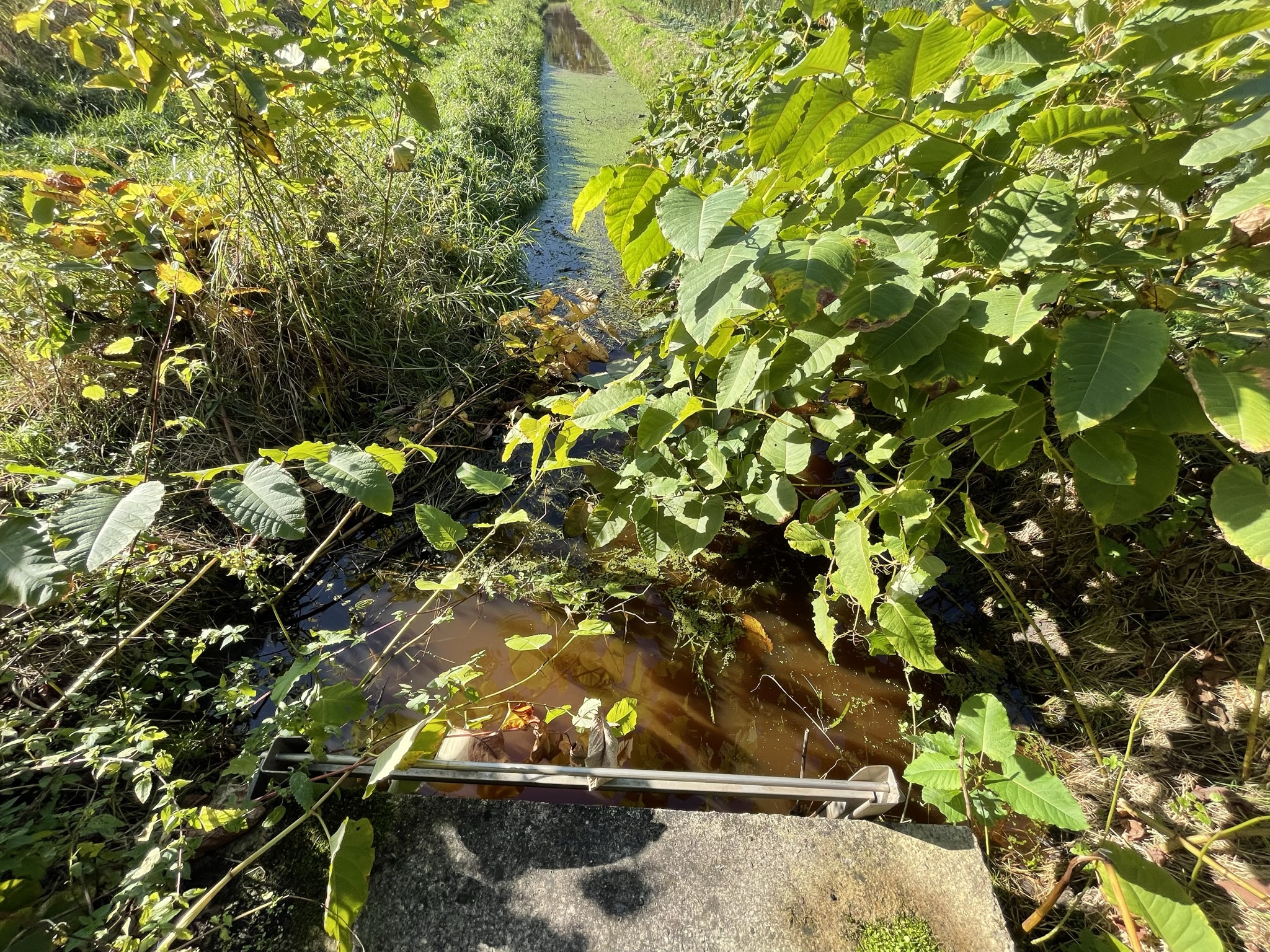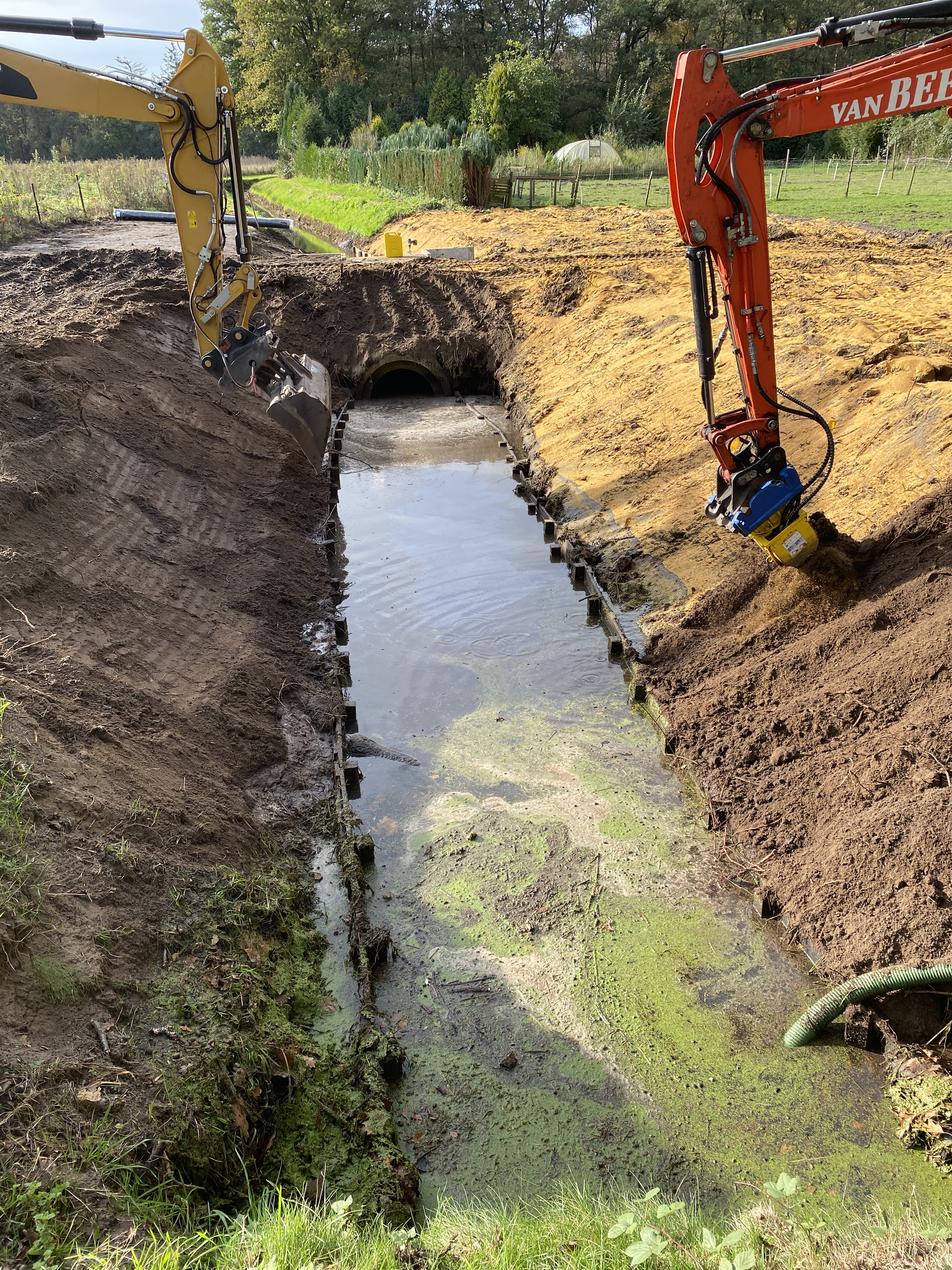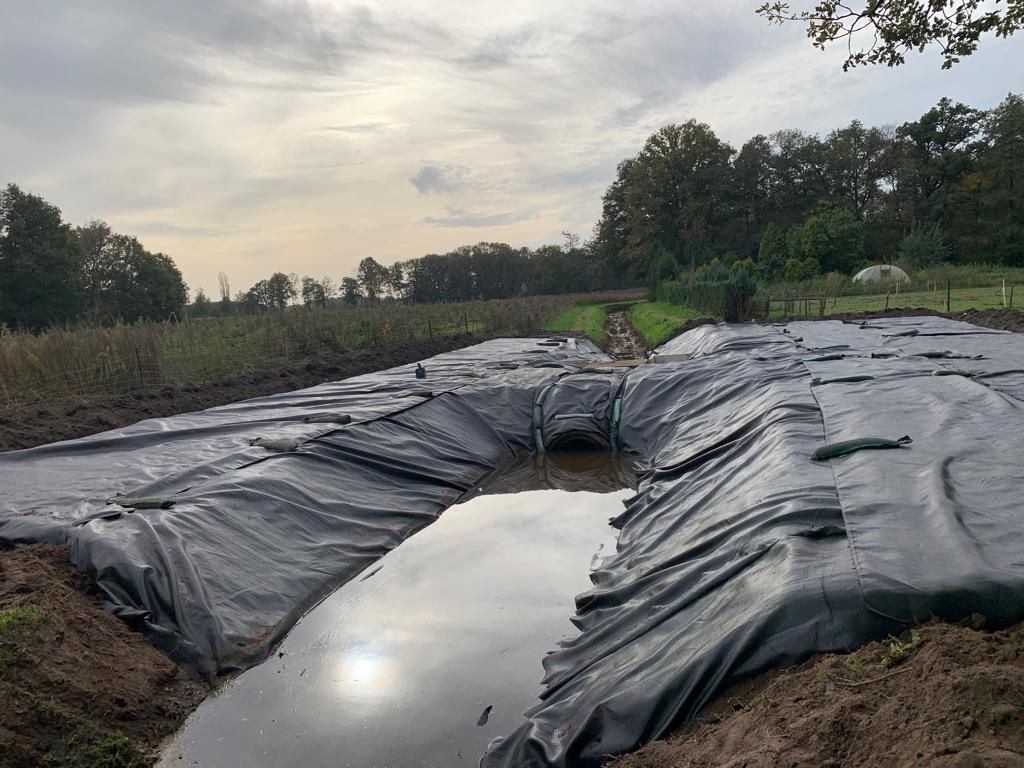Roots Reset: to control Japanese knotweed along watercourse
Control of Japanese knotweed near watercourses is important to protect dykes and embankments. This is because Japanese knotweed is an invasive exotic species that can grow rapidly and displace other plants. This can endanger the erosion resistance of dikes. Its deep roots can also cause considerable damage to dikes and banks. Partly for this reason, Waterschap De Dommel (Water Board) is committed to combating Japanese knotweed.
We are often asked by water boards whether it is also possible to use Roots Reset along watercourses. This and many other practical situations with Japanese knotweed along watercourses, show that Roots Reset can be put to good use when controlling Japanese knotweed along ditches.
At the treated site, there was first a huge hotbed of Japanese knotweed on both sides of the watercourse. In addition, Japanese knotweed was growing on top of a weir. The foci were first mowed down and carefully disposed of. The residual roots of Japanese knotweed were milled ‘to pieces’ and at the same time CleaRoot granulate were incorporated into the soil. This was carried out on both the sloping areas (slope), as well as on the flat area. The treated area was then covered using oxygen-tight foils and protective (root) cloths. To fix the foils and cloths, the already constructed sheet piling was used on the waterfront. As a result, the entire treated area was tightly sealed off, preventing oxygen supply from entering the waterfront as well.
In this project, Roots Reset was carried out in close cooperation with (green) contractor Van Beers.
We are often asked by water boards whether it is also possible to use Roots Reset along watercourses. This and many other practical situations with Japanese knotweed along watercourses, show that Roots Reset can be put to good use when controlling Japanese knotweed along ditches.
At the treated site, there was first a huge hotbed of Japanese knotweed on both sides of the watercourse. In addition, Japanese knotweed was growing on top of a weir. The foci were first mowed down and carefully disposed of. The residual roots of Japanese knotweed were milled ‘to pieces’ and at the same time CleaRoot granulate were incorporated into the soil. This was carried out on both the sloping areas (slope), as well as on the flat area. The treated area was then covered using oxygen-tight foils and protective (root) cloths. To fix the foils and cloths, the already constructed sheet piling was used on the waterfront. As a result, the entire treated area was tightly sealed off, preventing oxygen supply from entering the waterfront as well.
In this project, Roots Reset was carried out in close cooperation with (green) contractor Van Beers.



